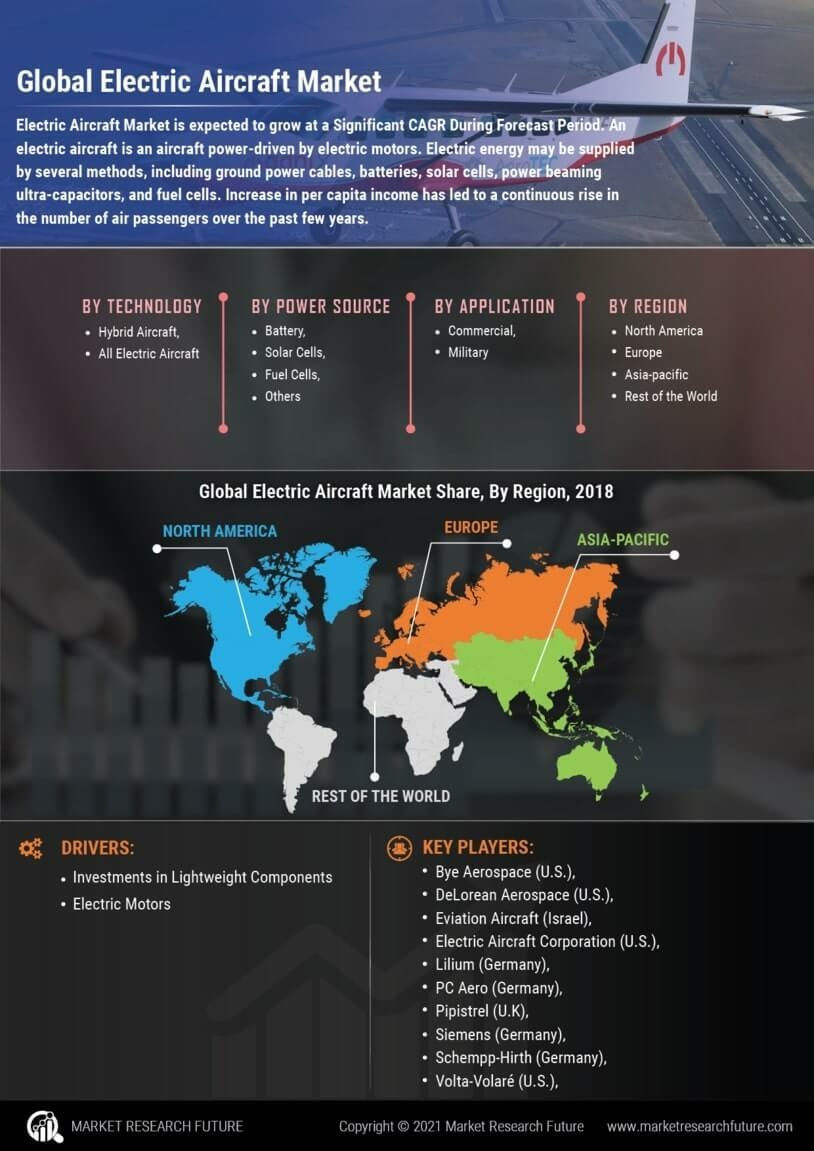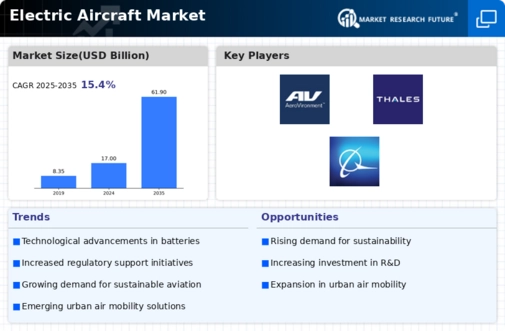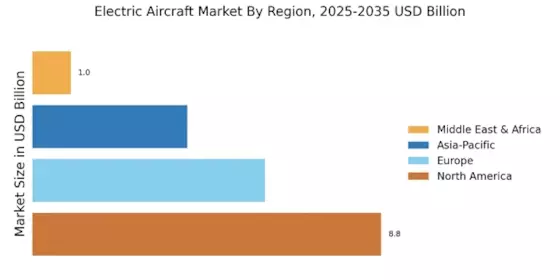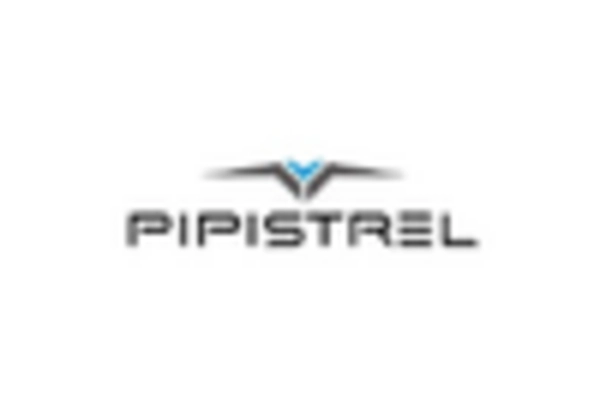Leading market players are making significant R&D investments in order to diversify their product offerings, which will drive the market for electric aircraft to expand even more. Important market developments include new product releases, contractual agreements, mergers and acquisitions, greater investments, and collaboration with other organizations. Market participants are also engaging in a number of strategic actions to increase their global footprint. The industry for electric aircraft must provide affordable products if it wants to grow and thrive in a more competitive and challenging market environment.
One of the primary business strategies utilized by manufacturers in the global electric aircraft industry to assist customers and expand the market sector is local manufacturing to reduce operational costs. The electric aircraft industry has recently provided some of the most important benefits to medical. Astronics Corporation, Amphenol Corporation, Honeywell International Inc., Meggitt PLC, Thales Group, Boeing, Airbus S.A.S., Lockheed Martin Corporation, and other major players in the electric aircraft market are expanding their respective product portfolios and gaining a strong foothold in the global market.
Pratt & Whitney Canada (PWC or P&WC) is a Canadian manufacturer of aviation engines. The headquarters of PWC are located in Longueuil, Quebec, just outside of Montreal. It is a subsidiary of the bigger US-based Pratt & Whitney (P&W), which is a branch of Raytheon Technologies Corporation. [2] PWC has been awarded a global mandate by United Technologies for small and medium aviation engines, while P&W's American divisions research and produce larger engines.
In July 2021, Pratt & Whitney Canada (P&WC), a Pratt & Whitney business entity, announced a collaboration with De Havilland Aircraft of Canada Ltd (De Havilland Canada) to integrate hybrid-electric technology into a De Havilland Canada Dash 8-100 flight demonstrator. Collins Aerospace will supply a sophisticated electric motor and controller for the flight demonstrator.
Airbus SE is a multinational aerospace firm based in Europe. Airbus designs, manufactures, and sells commercial aircraft, as well as having separate businesses for Defense and Space and Helicopters. Airbus is the world's largest maker of airliners and the third largest manufacturer of turbine helicopters as of 2019.
In April 2021, Airbus announced plans to replace mechanical rudder controls on A320 Neo-family aircraft with full electric rudder systems by early 2024. The upgrade will correspond with the introduction of the long-range A321XLR, which was designed with the 'E-rudder' architecture in mind.
Recent Development
In January 2023, the most recent carrier to indicate interest in purchasing Alice, an all-electric commuter plane that Eviation is currently developing, is the start-up Mexican airline Aerus. A letter of intent was signed by the Monterrey, Mexico-based business to buy 30 of the aircraft, which it plans to use for flights throughout northeast Mexico.
For instance, In 2023 : Beta opens a manufacturing plant for electric aircraft and begins production. Whereas publicly listed electric aircraft firms celebrate every technical and financial victory to appease investors, Beta Technologies has achieved significant strides in the relative safety of private ownership. Over 500 flights have been completed by two piloted, full-scale demonstrators, performing both vertical and conventional takeoffs and landings. Thousands of hours of ground testing have been accomplished by hundreds of electric motors. At Vermont's Patrick Leahy Burlington International Airport, Beta established its production site.
For instance, In 2023 : AIBOT has chosen Honeywell to supply its Compact Fly-By-Wire (cFBW) system in order to facilitate the company's completely electric vertical takeoff and landing (eVTOL) aircraft. The next generation of aircraft avionics will be empowered by this Honeywell technology, which will also establish a sustainable transportation ecosystem. The compact Fly-By-Wire system from Honeywell, which is as light as a paperback book, gives aircraft manufacturers—like AIBOT—more design freedom without sacrificing power or safety.
The hybrid-electric, ultra-short takeoff and landing (eSTOL) EL-2 Goldfinch aircraft has successfully completed its first flights, according to a 2023 announcement from Electra.aero, Inc. (Electra). The first blown lift aircraft in the world to use hybrid-electric power and distributed electric propulsion is the two-seat Goldfinch eSTOL technology demonstration. Compared to traditional aircraft and helicopters, the aircraft's noise and pollution are drastically reduced thanks to its eight electric motors, which also allow for ultra-short takeoffs and landings. Long ranges can be achieved with hybrid electricity without the requirement for ground-based charging stations.


















Leave a Comment